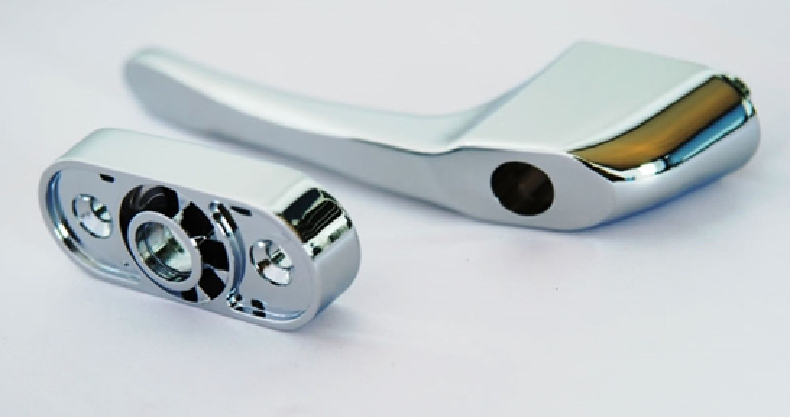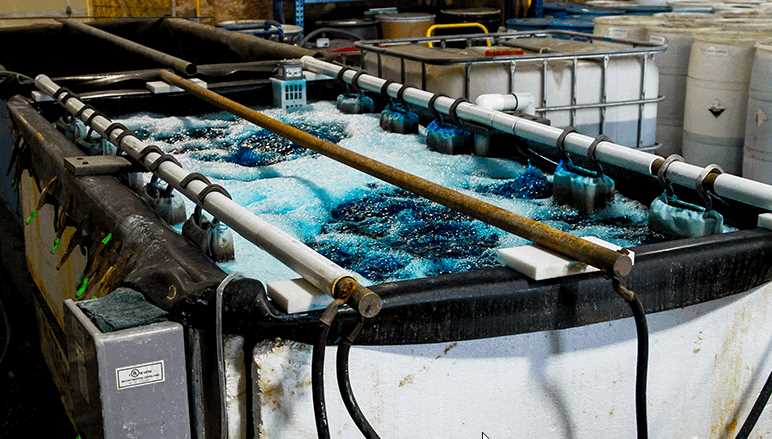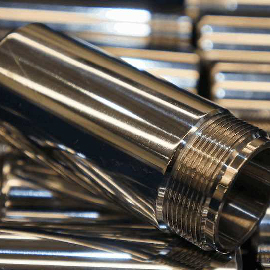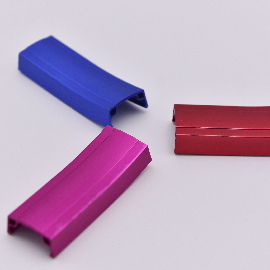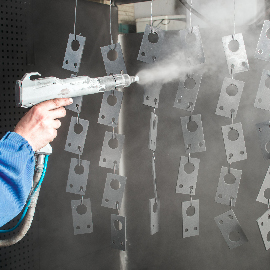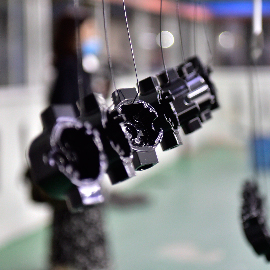Chrome plating is a popular surface finishing for die casting parts especially for zinc die casted products. It has a strong aesthetic look and excellent protection against corrosion and wears.
Sunrise Metal focus on die casting manufacturing for many years. We also offer chrome plating finishing service for both aluminum die casting parts and zinc die casting parts. If you have any inquiries about chrome plating treatment, you can contact us at any time.
Step By Step Process of Chrome Plating Aluminum
Ever wondered about the difficulty of applying a surface finish to metal parts? If you are unfamiliar with surface finishes, then you would be surprised to know about the processes involved in applying just a thin layer of chromium.
Here’s a step-by-step detailed explanation of the chrome plating process for chrome aluminum parts.
Degreasing
Before any surface finishing, degreasing is mandatory. And the same goes for chrome plating as well. The substrate is made sure not to contain any impurity on the surface. Any traces of grease, dirt, paint, primers, etc. must not remain in the parts.
Polishing
After cleaning the parts, they are polished to smoothen the aluminum parts. It is done with the help of a mechanical grinder. It removes any scratches or marks that were left after machining or casting the aluminum parts.
Cleaning
Clean the aluminum parts again to remove any residue left after polishing. They are cleaned and rinsed with various types of chemicals. Each type of chemical takes care of a specific type of impurity, such as oil, oxide, residue metal, etc.
Copper Buffing
Aluminum has a natural layer that improves its corrosion resistance. But due to this, there are some difficulties involved in chrome plating aluminum parts. So, aluminum is usually given a copper coating and buffed to make chrome plating possible.
Nickel Plating
After buffing is complete, the parts are cleaned once again. Then it is desirable to coat the substrate with an additional nickel layer. It significantly improves the looks and durability of the final chrome finish.
Chromium Electroplating
The parts are submerged in an electrolyte solution for electroplating once all the pretreatment processes complete. A specified intensity of the direct current is run through the electroplating setup to deposit chromium into the aluminum part.
The parts are kept in the electroplating bath for a specific amount of time to control the thickness of the coating. The chrome layer initially has a golden color to it. But after rinsing the parts, it achieves a shimmering silver color.
Features and Advantages of Chrome Plating Aluminum
Chrome Plating is one of the most popular surface finish options preferred by manufacturers. Its unique features and metallurgical value makes it an ideal surface finishing choice. Let’s have a look at the main features and advantages of chrome plating aluminum.
- Aluminum parts have excellent corrosion protection, but it is not very strong against wear. Chrome plating is a good choice to improve the wear resistance of parts.
- Chrome gives a shiny aesthetic finish to your parts. Its reflective surface looks very good at products.
- Chrome can withstand extreme weather conditions. So, the coating isn’t damaged easily and keeps the underlying substrate in good condition for longer periods.
- It is an excellent option for recycling old vehicle parts. It can make used parts look like new again.
- Chrome plating has low surface friction. This makes it ideal for a certain type of application and suitable for automotive components.
Chrome Plating is Classified Based on its Purpose
Aluminum chrome coating can have a variable thickness depending on its application. It is classified into the following categories based on its application.
- Decorative Chrome Plating
- Hard Chrome Plating
Each of the chrome plating options has its pros and cons. Both types of chrome plating have equal importance in the industry.
We are going to discuss the relative advantages and features of these two types of chrome plating on aluminum parts. But first, let’s get to know about the chrome plating types in detail.
Decorative Chrome Plating
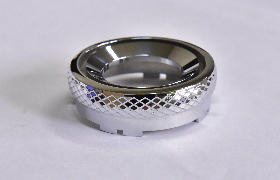 A decorative chrome finish is desirable on automobile parts and kitchen utensils. It offers both pleasing looks and performance. And the plating thickness is very thin, ranging from 0.05 to 0.5 micrometers only.
A decorative chrome finish is desirable on automobile parts and kitchen utensils. It offers both pleasing looks and performance. And the plating thickness is very thin, ranging from 0.05 to 0.5 micrometers only.
Aside from the look, a decorative chrome plating has excellent corrosion resistance. But Its wear resistance and hardness are comparatively less than hard chrome. So, a decorative chrome plating is mostly followed by a nickel plating for improving its properties.
Hard Chrome Plating
Hard Chrome is comparatively thicker than Decorative Chrome. It offers much better wear resistance and has reduced friction. That makes it more suitable for engineering applications. So, it is also known as industrial chrome as well.
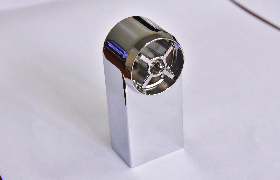 Hard chrome plating thickness usually ranges from 20 to 40 micrometers. It can be made up to 100 micrometers thick, depending on the wear resistance requirements. But, electroplating doesn’t chrome the aluminum parts uniformly.
Hard chrome plating thickness usually ranges from 20 to 40 micrometers. It can be made up to 100 micrometers thick, depending on the wear resistance requirements. But, electroplating doesn’t chrome the aluminum parts uniformly.
When the parts have an irregular geometry, the coating tends to be uneven and likely to have surface defects. So, a thicker coating is applied to the parts. Then it is brought back to the precise dimensions through grinding.
There are Different Types of Chromium Used in Chrome Plating
There are two types of chromium used for chrome plating, namely Hexavalent and Trivalent chromium. So, chrome plating is often classified according to the coating material.
Hexavalent chromium plating
It is also known as hex-chrome plating and uses chromium trioxide as the base material. It can be used for both decorative and hard chrome. The process of hex-chrome is similar to what we have discussed before.
First, the parts are given proper surface treatment prior to the chroming. Then it is dipped into a chromium bath for electroplating. Finally, the parts are again thoroughly cleaned to remove residual material after chroming.
For decorative chrome plating, the temperature ranges from 35 to 45 °C. In the case of hard chrome plating, the required temperature is about 50 to 60 °C. However, the temperature increased for higher current inputs.
The coating uniformity is less for hex-chrome because the cathode efficiency is not up to the mark. It results in uncoated areas located into sharp edges and deep holes. So, auxiliary anodes are used to make the coating more uniform.
Hexavalent chromium is a hazardous substance. It is very toxic and proved to have human carcinogenic properties. So, it is not allowed in some places, and even if it allowed strict regulations are imposed for its disposal.
Trivalent chromium plating
Trivalent chroming is a less toxic alternative to Hexavalent chroming. It is also commonly known as tri-chrome plating. It uses either chromium sulfate or chromium chloride as its base material for electroplating.
The process for tri-chrome plating is similar to other chromium plating processes as well. But there is multiple electroplating setup for the same process.
Trivalent chromium can be deposited to a thickness of 0.13 to 1.27 μm. It is more cathode efficient than hexavalent chromium and requires less current density for plating. So, it helps to cut some production costs.
Tri-chrome is also comparatively less hazardous than hex-chrome. So, handling and disposal are less complicated. It contributes to reducing the overhead costs of production.
Differences in Properties and Application of Decorative and Hard Chrome Plating
The main difference between these two is the thickness. A decorative chrome plating mainly focuses on the appearance of the parts. So, the coating is made thinner. But, decorative chrome aluminum still provides good corrosion resistance for your aluminum parts.
Decorative chrome plating is possible with both trivalent and hexavalent chromium. So, you have the option to choose any one of them. However, trivalent chromium is used for chrome plating most of the time due to health concerns associated with the hexavalent chromium.
 On the other hand, hard chrome is significantly thicker. As the thickness of the chrome plating increase, its appearance becomes duller. But it provides exceptional resistance to corrosion and wear, and has better hardness properties as well.
On the other hand, hard chrome is significantly thicker. As the thickness of the chrome plating increase, its appearance becomes duller. But it provides exceptional resistance to corrosion and wear, and has better hardness properties as well.
It has a low friction coefficient that makes it an ideal choice for shafts, pumps, cylinders, etc. Hard chrome can be made more precise by grinding and polishing the parts. Easy repairing and maintenance of hard chrome plating are possible as well.
Due to the above facts, decorative chrome is more useful in wet and corrosive conditions. They are a great fit for car parts and kitchen utensils. It is easier to clean decorative chrome, which is a must for these kinds of applications.
Hard chrome is more suitable for engineering or industrial-grade applications. They are mainly used for internal parts such as motors, pistons, valves, shafts, etc. Other components in a system that requires high resistance against wearing also call for hard chrome.
You Can Chrome Plate Metals Other than Aluminum Too
We have been focusing on chrome plating aluminum from the beginning. But you can apply chrome on various other metals other than aluminum. It is usually applied to,
- Steel
- Copper alloy
- Zinc alloy
- Plastic etc.
Still, it has significantly more use for aluminum parts, including aluminum precision CNC machined parts and aluminum die casting parts. Most of the industries rely on aluminum parts nowadays for lighter and economic parts. And aluminum can be given multiple surface treatments along with chrome plating for extended durability.
Anodized Aluminum can be chrome plated as well. Chrome has excellent adhesion properties that can actually adhere to most surface coatings. But, it is mostly coupled with electroless nickel plating.
Don’t Know the Differences between Electroless Nickel Plating & Chrome Electroplating?
Electroless nickel plating is often used as an underlying layer for chrome plating. They have some similarities in their metallurgical properties, but the plating process is quite different. Unlike chrome, you can apply electroless nickel plating without any electricity.
Electroless nickel plating offers outstanding wear and corrosion resistance for your parts. But the visual appearance of chrome plating looks and feels more premium. This is a major reason for going for the extra hassle to apply chrome plating on top of a nickel plating.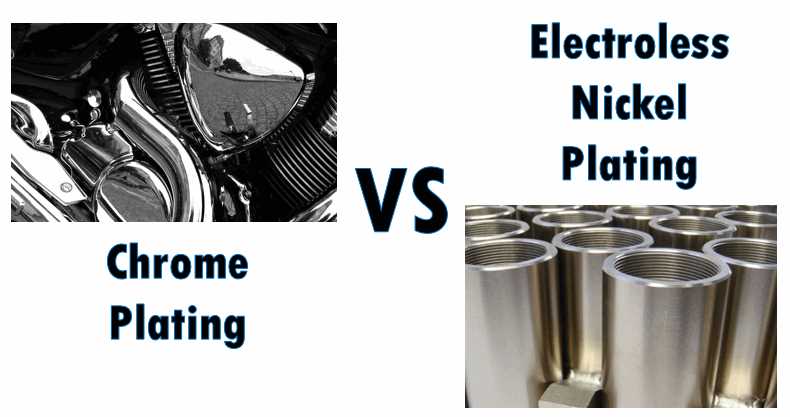
The underlying nickel coating imparts better wear resistance and hardness to the aluminum parts. So, the chrome layer can be made thinner and focus on a decorative look.
Another good thing about nickel plating is that it is much more uniform than chrome plating. So, it is often used to create a smooth surface over the metal parts. It helps to improve the surface quality of chrome plating.
Even though the differences, these two plating processes are quite complementary to each other. Both of them have some excellent qualities that can significantly enhance your aluminum parts quality.
Sunrise Metal Can Provide the Best Chrome Plating Solution
Sunrise Metal is an aluminum die casting company with vast capabilities. We specialize in all sorts of additional tasks related to die casting. Surface finishing is a very important part of the production.
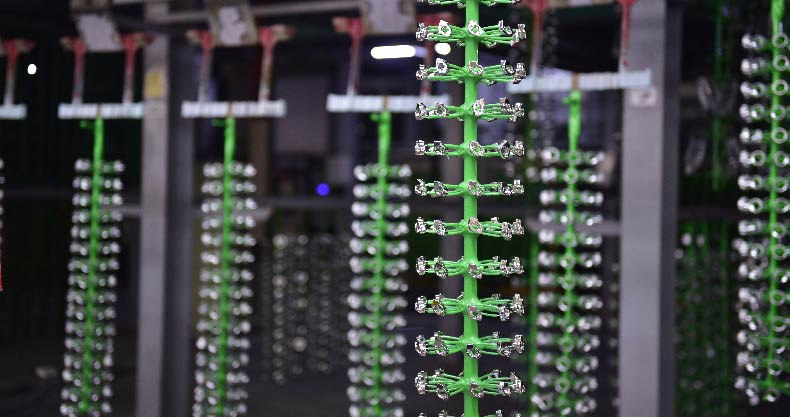 Without proper surface treatment, our careful craftsmanship for ensuring high-quality aluminum parts would be pointless. So, along with our in-house surface finishing facilities, we partnered with other companies that specialize in surface finishing.
Without proper surface treatment, our careful craftsmanship for ensuring high-quality aluminum parts would be pointless. So, along with our in-house surface finishing facilities, we partnered with other companies that specialize in surface finishing.
So you don’t have to waste any time looking for a company with good chrome plating services. Leave your surface finish supplier management to us. We will ensure you the best chrome plating solution for your aluminum parts.


